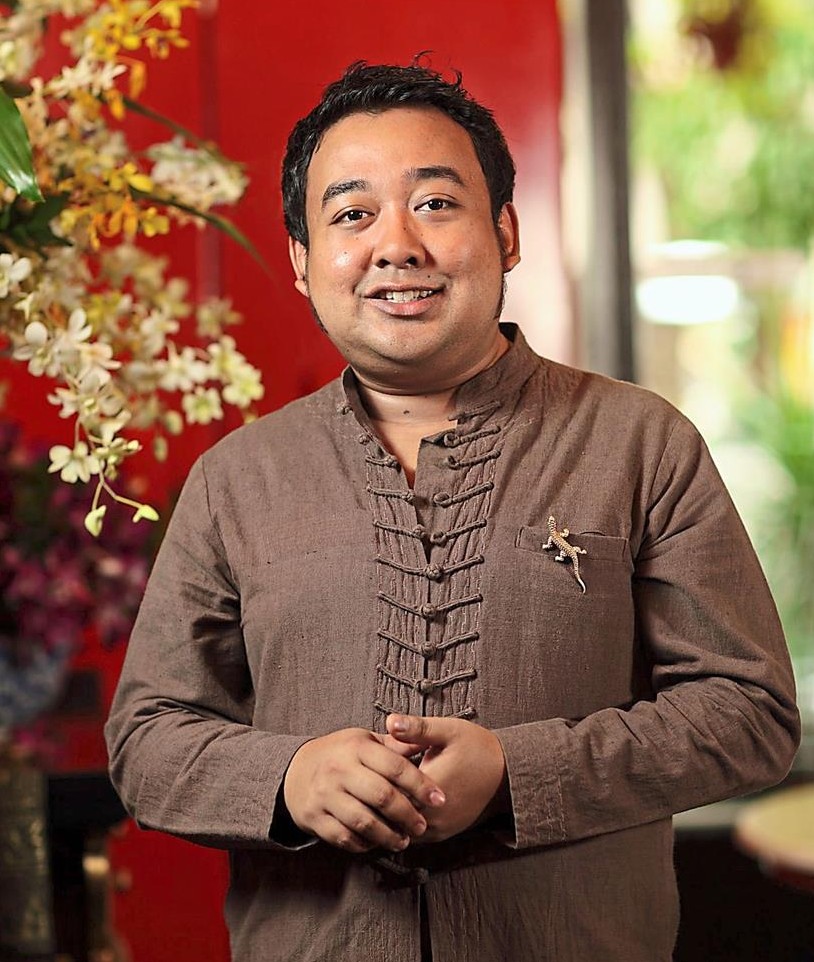If Chef Trakool Yodsuk has his way, every household will use, at least, three types of oil in their kitchen – one to stir-fry, one to make salad dressings and one to deep-fry.
“Most Asians have the habit of using just one type of oil for all their cooking. It may be cost effective, but surely doesn’t do justice to the food they are making,” says Chef Korn, as he is more popularly known.
Korn co-owns and heads the kitchen of Erawan Classic Thai and Fusion restaurant in Kota Damansara, Selangor. The restaurant is noted as one of Asia’s finest restaurants by the Miele Guide and has been selected numerous times as one of the best restaurants in the country.
The chef isn’t particular about the types of oil used to stir-fry or in salads – it can be canola, or olive oil – but insists that only palm oil is used for deep frying.
Maybe the chef is onto something. He does come from the land of the Thai paradox.
What is the Thai paradox? A quick walk down the streets of Bangkok will give you a hint.
Almost every corner of the city is packed with street food vendors selling deep-fried treats, and yet you would be hard pressed to find an obese Thai person around.
Could palm oil be the secret weapon in Thai cuisine for eating deep-fried food and still staying slim? On top of being cost effective, palm oil is also rich in pro-vitamin A and vitamin E, and is trans-fatty acids free, after all.
“The right oil brings out the best of the ingredients when you deep-fry. I am not saying that you should eat deep-fried food every day. Moderation is of course crucial in our diets.
“But think about it; if and when you do decide to have fried chicken, don’t you want to make the best fried chicken? That you get when you deep-fry with palm oil,” he says.
Deep-frying requires oil to be hot, and thus, one with a high smoke point does the trick best.
When oil is heated past this point, the fat molecules break down, oxidise and release free radicals and a substance called acrolein – the chemical that gives burnt foods their acrid flavour and aroma.
Canola has a smoke point of 220-230°C and olive oil’s stands at 180°C. Best for the job?

Korn says it is palm oil which is used in many of his Thai dishes. With 235°C smoke point, palm oil can withstand high heat and deliver the desired end product.
Besides palm oil, Chef Korn has another secret to getting the crispy, crunchy fried chicken skin that every home cook desires.
He uses crushed ice in his recipe, modifying the Japanese chefs’ use of ice water for making tempura.
Cold water develops the gluten in the flour slower than warm water does. Developed gluten makes for denser batter skin when cooked, so it is ideal to keep it dormant for as long as possible.
Korn’s fried chicken wings with crushed ice are unbelievably crisp and crunchy, so there probably is a method in his madness.
“Go ahead and use crushed ice for your deep-fried recipes. It works really well for fried fritters as well. You won’t look at your pisang goreng the same way again,” he says with a smile.

Combine the flour and crushed ice.

Mix by hand until the ice melts into the flour.

After 5 to 10 minutes of mixing by hand, it will become a batter.

Whisk batter until smooth.

Mix in the spice paste.

Rinse and drain paku and petals.

Dip the paku and petals in the batter.

Deep-fry in hot palm oil until golden.
Korn uses pisang Raja to make fritters as the banana isn’t too soft and won’t go limp after deep-frying.
“I also add grated coconut in the batter to give it a better texture. It’s a common trick when frying fritters in Thailand,” he says.
If there is one rule that Korn practises with palm oil, it is its reusability. He suggests frying potatoes in used palm oil to make it “clear” for the second usage.
“A good reminder is not to reuse your palm oil until it turns thick and near black. Degraded oil not only has a reputation for clogging your arteries, it is also bad for the cook to inhale the smoke that it emits,” he says.
“Reuse oil just once or twice – don’t over use it.”
Source: Star2.com




